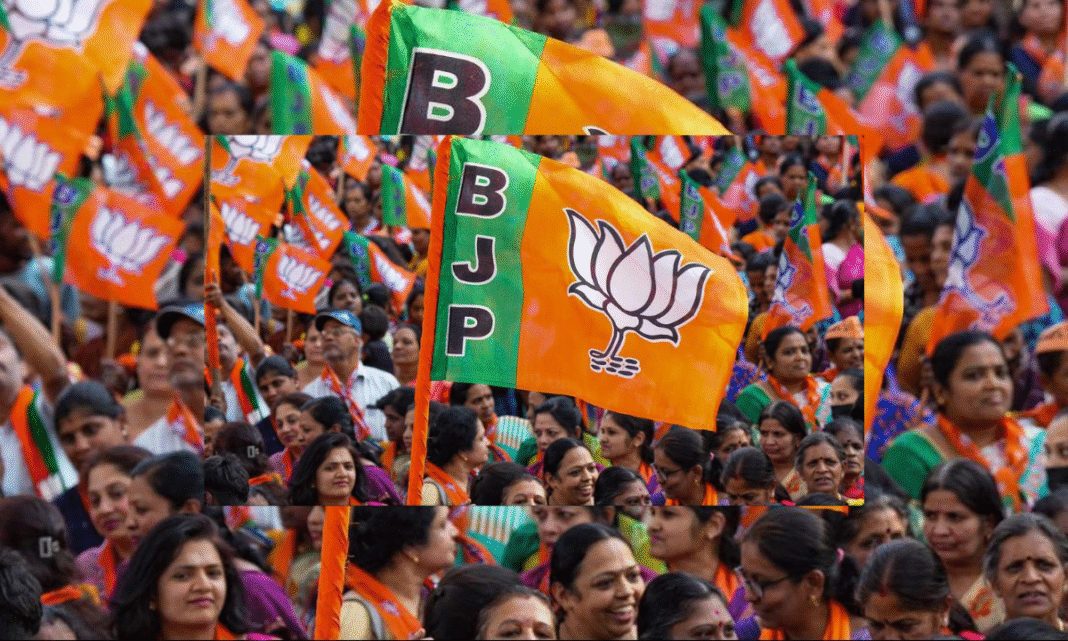The Bharatiya Janata Party (BJP) on Tuesday, October 14, 2025, announced its first list of 71 candidates for the upcoming Bihar Assembly elections, scheduled to take place on November 6 and 11. The declaration has officially kicked off the state’s political season, setting the tone for a fierce electoral contest that will determine Bihar’s political direction for the next five years.
Out of the 71 seats announced, nine have been reserved for women candidates, highlighting the BJP’s attempt to promote gender inclusivity and representation in the state legislature. However, the list has also generated discussion and surprise within political circles as Bihar Legislative Assembly Speaker Nand Kishore Yadav’s name was missing. The party has instead chosen Ratnesh Kushwaha as its candidate from Yadav’s constituency, marking a significant reshuffle and a move toward bringing in new faces.
Another major highlight of the list is Bihar Health Minister Mangal Pandey, currently a member of the Bihar Legislative Council, who will be contesting the Siwan Assembly seat. The BJP’s decision to field him in the direct election indicates confidence in his administrative track record and mass connect.
Additionally, Ram Kripal Yadav, who lost the 2024 Lok Sabha elections to RJD’s Misa Bharti from the Patliputra parliamentary constituency, has been nominated from the Danapur Assembly seat. The move underlines the party’s faith in Yadav’s political experience and influence in the Patliputra region.
The BJP’s first list arrives at a critical juncture, as the National Democratic Alliance (NDA) in Bihar finalizes its seat-sharing arrangement. As per the understanding, both the BJP and JD(U) will contest 101 seats each, while the Lok Janshakti Party (Ram Vilas) led by Union Minister Chirag Paswan will contest 29 seats. Meanwhile, the Rashtriya Lok Morcha (RLM) led by Upendra Kushwaha and the Hindustani Awam Morcha (Secular) headed by Jitan Ram Manjhi have each been allotted six seats.
This structured distribution aims to maintain balance within the NDA coalition, ensuring that all partners have a meaningful role in the upcoming elections. The BJP’s early candidate announcement demonstrates its intent to begin ground-level campaigning early and build momentum before opposition parties finalize their own lists.
On the other hand, the INDIA bloc, spearheaded by the Rashtriya Janata Dal (RJD) in Bihar, is yet to finalize and announce its seat-sharing formula. Sources indicate that prolonged discussions are ongoing between the RJD, Congress, and Left parties regarding distribution of constituencies. The delay has provided the NDA an opportunity to establish an early organizational advantage in campaign groundwork.
In a surprising twist earlier on Tuesday, RJD chief Lalu Prasad Yadav distributed several party tickets before his son and political heir Tejashwi Yadav intervened, reminding him that the alliance’s seat-sharing negotiations were still incomplete. The episode underscored coordination challenges within the INDIA bloc, while the BJP’s more structured approach appeared to project stronger discipline and internal unity.
Political observers note that the BJP’s early announcement reflects a strategic emphasis on field preparation and voter outreach. By naming candidates ahead of schedule, the party ensures that local leaders have sufficient time to connect with their constituencies, fine-tune booth-level networks, and address anti-incumbency sentiments. The mix of veteran politicians and emerging leaders in the list indicates a deliberate balance between experience and youth appeal.
With Chief Minister Nitish Kumar of JD(U) expected to lead the joint NDA campaign in coordination with BJP leadership, the alliance is looking to consolidate its position across urban and rural Bihar. Meanwhile, Tejashwi Yadav’s RJD is expected to mount a strong challenge, focusing on unemployment, inflation, and social justice as key campaign issues to attract youth and backward-class voters.
As the campaign season gathers pace, all eyes will be on crucial constituencies like Siwan, Danapur, and Patliputra, where heavyweight candidates from both alliances will face off in high-stakes contests. The BJP’s proactive strategy in announcing its list first has put pressure on other parties to finalize their own nominations quickly and join the electoral fray.
The 2025 Bihar Assembly elections promise to be one of the most closely contested political battles in recent years, shaped by a combination of regional dynamics, caste equations, and leadership narratives. With both alliances gearing up for a showdown, the outcome will play a pivotal role in shaping the state’s political landscape — and could also have national implications for India’s political future.


